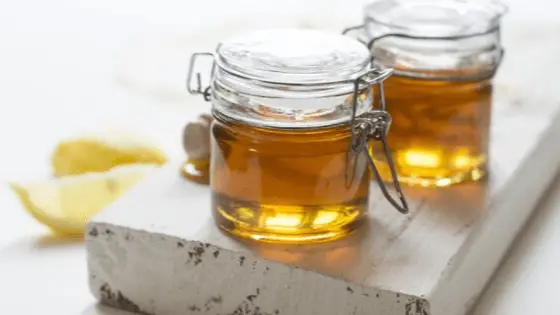Using Apple Cider Vinegar for Keloids
Using Apple Cider Vinegar for Keloids

When you buy through links on our site, we may earn an affiliate commission at no additional cost to you (learn more)
Apple cider vinegar is not just something to keep in your kitchen anymore. This natural acid can be used to condition your hair, prevent acne, help you lose weight, and much more. But the real benefits of apple cider vinegar may be for your skin, especially if you have scars. If you are one of the millions of people with scar tissue, especially keloids, then you should keep reading about the ways that apple cider vinegar can help you improve the appearance and texture of your skin.
Understanding Keloids
Keloids are a specific type of scar tissue that develop in some people. When healthy skin heals, your body forms new blood vessels in the area, and blood brings nutrients and oxygen to the site. Your body sends chemical messengers to direct your skin to make collagen, which is a protein that forms the structure of new skin tissue. New skin tissue is built around this collagen, and while you may notice a slight scar, these usually fade over time.
Keloids happen when your body produces way too much collagen. The resulting scar is raised, often much darker than the surrounding skin, and is often very tough and shiny. Keloids often grow for some time after the initial injury, sometimes taking months to stop developing. During that time, they can become itchy, painful, or sensitive.
Anyone can develop a keloid, even if you have never had one before, and some people develop them on nearly all their skin wounds. They are often linked to inflammation, and those with darker skin or a family history of keloids are much more likely to develop them.
Understanding Apple Cider Vinegar
Apple cider vinegar is made from fermented apple juice. First, apples are crushed and squeezed to provide the cider. Yeast and bacteria are added to this to begin the fermentation process, converting the sugars from the apples into alcohol. In a second fermentation step, bacteria are added to form acetic acid by turning the alcohol into vinegar. Apple cider vinegar is high in both acetic and malic acids.
The acetic acid in apple cider vinegar is effective at killing harmful bacteria. It also acts as an antioxidant in the body, which can boost your immune health and help protect you from disease. But it is the mild acidic nature of apple cider vinegar that helps treat keloids and other types of scars.
Using Apple Cider Vinegar on Keloids
Apple cider vinegar is a popular remedy for treating keloids because of its effectiveness at reducing inflammation and redness. The acetic acid and alpha hydroxy acid in apple cider vinegar
Apple cider vinegar is a known remedy used to help reduce redness and inflammation from keloid scars. These acids help to thin tough skin layers, and they cause the outer layer of skin to loosen and shed. This effect can help keloids from growing out of control and becoming so raised.
The mildly acidic nature of apple cider vinegar is perfect for removing dead skills cells, too. Using apple cider vinegar on the skin also stimulates circulation, which can speed up the healing process for your keloid.
While keloids are developing, applying apple cider vinegar to them can help to reduce swelling and itching because of its natural anti-inflammatory properties. When you stick with regular application, the scars will noticeably flatten and soften. While the gentle acid in the vinegar may result in some mild irritation, do not pick at or peel the skin off during this process, or you could create more inflammation and irritation.
The acetic acid in apple cider vinegar is not only useful for getting rid of bacteria on your skin but it also speeds up the healing process of keloids. It helps your skin to regenerate correctly, reducing the size and discoloration of any keloids you might have.
Anyone who is prone to developing keloids should begin treating scars right away to prevent overgrowth of the scar tissue. Keeping your skin treated with apple cider vinegar and protecting it from the sun can help heal your skin faster and prevent the formation of the tough, dark, raised skin characteristic of keloids.
Treating Keloids with Apple Cider Vinegar
There several popular methods for using apple cider vinegar to treat scar tissue, including keloids. Below, we explore two of these methods in detail, providing step-by-step instructions for you to use these remedies at home.
Diluted Application
Apple cider vinegar can quickly irritate the skin, so many people find that diluting it with water gives them reliable results for treating their keloids without further skin discomfort. For anyone with sensitive skin or who experiences burning while using this remedy, diluted vinegar will be your best choice.
To use, dilute the vinegar with equal amounts of water and then apply it directly to the scar tissue using a clean cotton square or ball. Allow the vinegar to stay on the skin for 30 minutes, then rinse the area with warm water. Repeat this twice per day for at least four weeks. You can also gently massage the skin each time you apply the apple cider vinegar, which also enhances the healing process.
Honey and Apple Cider Vinegar

In addition to enjoying the benefits of apple cider vinegar, you can add this to raw honey to improve the healing power. Raw honey not only kills bacteria but it also effectively reduces the inflammation that is leading to your keloid formation. Honey helps promote circulation to your scar tissues while speeding up the healing process. Together, these are powerful skin healers.
Start by following the procedure from above to use diluted apple cider vinegar on your keloid. Allow this to sit for at least 15 minutes. Next, apply a small amount of raw honey over the scar and massage it gently for several minutes. Allow this to sit for half an hour, then rinse with warm water.
Final Thoughts
Using apple cider vinegar to treat your keloids is a practical, easy, and inexpensive way to promote skin healing and reduce the appearance of these raised scars. Patience is needed for this type of natural remedy, as results will take some time to notice. Most people see improvement after one month but may need further treatment until the keloid stops growing. If your keloid does not respond to treatment after this time, you may want to seek advice from a dermatologist.




